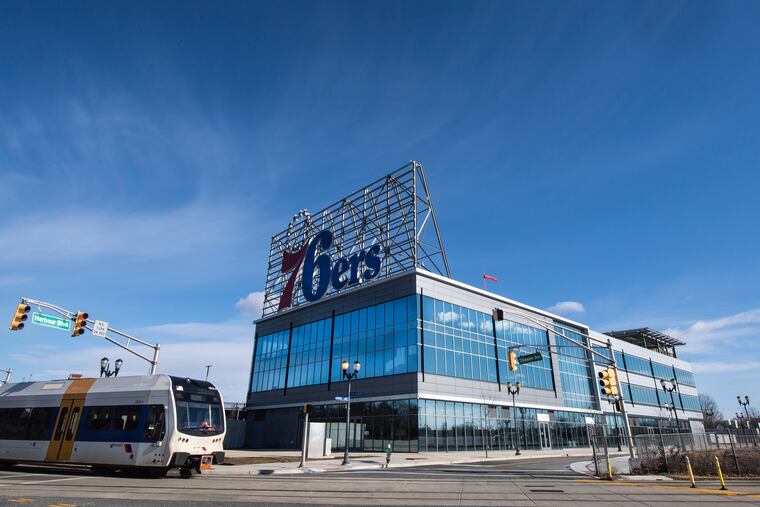New Jersey gave away $1.4 billion to companies to move to Camden or stay there. Was it worth it? | Opinion
Do such tax-dollar funded financial incentives make sense? That is uncertain since the long term benefits are rarely clear, meaning many tax breaks don’t wind up paying for themselves.

When Amazon went looking for new places to locate additional headquarters, it put out a “request for proposal.” The idea was to get governments to bid for its business by providing tax incentives as well as real funding, such as building highways, to support the new locations.
But do these incentives make sense? That is uncertain because the long-term benefits are rarely clear, meaning that many tax breaks don’t wind up paying for themselves.
First, let’s be clear: Governments, not businesses, bear the responsibility of any failed tax expenditure. Businesses are in business to make money and, as such, have every reason to demand something from government. Indeed, they would be foolish not to threaten to leave an area or refuse to relocate to an area unless incentives are provided.
And for politicians, tax incentives are political “gimmes.” If they succeed, they get the credit. If they fail, they can always say they tried. And because the full impact of the decision is rarely known for less than a decade, politicians are seldom around to suffer the consequences of a failed tax break.
Nevertheless, there are reasons to use – or not use – tax incentives, and the City of Camden is a perfect example of both.
In 2013, New Jersey passed the Economic Opportunity Act of 2013 that created the Grow New Jersey and Economic Redevelopment and Growth Programs. The intention was to use tax incentives to retain and attract businesses in order to accelerate job growth.
Camden was singled out as a special case because of its long-term distressed economy. If ever there was a location where tax incentives were likely needed, it was Camden.
Indeed, Camden is the runaway leader in the tax incentive battle. According to a recent report by Rutgers University’s Bloustein School of Public Planning and Public Policy, Camden has been the focus of the process, receiving about $1.5 billion of the nearly $4.5 billion in incentives granted since 2013.
Unfortunately, the rules for Camden grants were relaxed, which is why we wound up with some good, some bad, and some really ugly tax incentives.
Despite receiving about 34 percent of the total statewide tax breaks, Camden’s potential job gains, through either retention or attraction, are expected to make up only about 9 percent of the total.
That modest job improvement is reflected in the cost of each position. The average annual expense per job in Camden was $34,000, about 4.5 times the state average of $7,650. There was one project where the average cost exceeded $65,000 per job per year. At those prices, it is hard to see how the state could ever truly recoup its investment.
Indeed, the benefit vs. cost calculations in Camden were distressingly low. One project had benefits and costs being equal, an investment return (or lack thereof) that no private investor would undertake given the risks involved.
That project has removed from the market one of the most desirable waterfront locations in the city. I am not sure what kind of hoops the company owners had to jump through to land the incentives, but they apparently were not very high.
As for forming a base for future economic growth, the collection of grants doesn’t seem to fit any master economic development plan. The projects don’t appear to have been chosen in order to maximize local/neighborhood job creation or develop industry concentrations that could be used to attract additional, similar types of companies.
Stand-alone projects that are not integrated into the city or companies that don’t have a hiring profile that match the local labor supply rarely form a foundation for rapid future growth.
That doesn’t mean all the projects were not of value. Grants to help build mixed-use residential/office, retail/hospitality projects or expand the city’s health-care sector made total sense. And across the state, some of the smaller grants had huge potential returns at very low costs.
Camden is beginning to revitalize, but it is not clear whether the massive amount of tax incentives will form an economic base that will ensure long-term strong growth. And it is likely that many of the projects will not pay the state back for the tax breaks provided.
For tax incentives to create foundations for faster future growth, they should be matched to local and regional economic needs and trends.
As New Jersey Gov. Phil Murphy noted, tax incentives “must be … part of a broader package of incentives and investments that the state can make to better the climate for all businesses, not just a few favored actors.”
Joel Naroff is president and chief economist at Naroff Economic Advisors, Inc.